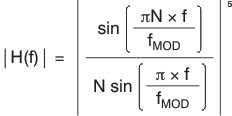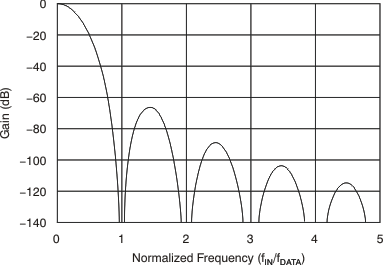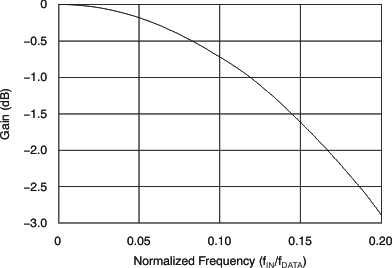SBAS778B June 2017 – August 2019 ADS1287
PRODUCTION DATA.
- 1 Features
- 2 Applications
- 3 Description
- 4 Revision History
- 5 Pin Configuration and Functions
- 6 Specifications
- 7 Parameter Measurement Information
-
8 Detailed Description
- 8.1 Overview
- 8.2 Functional Block Diagram
- 8.3 Feature Description
- 8.4 Device Functional Modes
- 8.5
Programming
- 8.5.1 Serial Interface
- 8.5.2
Commands
- 8.5.2.1 WAKEUP: Wake Up Command
- 8.5.2.2 STANDBY: Standby Mode Command
- 8.5.2.3 SYNC: Synchronize ADC Conversions
- 8.5.2.4 RESET: Reset Command
- 8.5.2.5 RDATAC: Read Data Continuous Mode Command
- 8.5.2.6 SDATAC: Stop Read Data Continuous Mode Command
- 8.5.2.7 RDATA: Read Data Command
- 8.5.2.8 RREG: Read Register Data Command
- 8.5.2.9 WREG: Write Register Data Command
- 8.5.2.10 OFSCAL: Offset Calibration Command
- 8.5.2.11 GANCAL: Gain Calibration Command
- 8.6
Register Map
- 8.6.1
Register Descriptions
- 8.6.1.1 ID/CFG: ID, Configuration Register (address = 00h) [reset = x0h]
- 8.6.1.2 CONFIG0: Configuration Register 0 (address = 01h) [reset = 52h]
- 8.6.1.3 CONFIG1: Configuration Register 1 (address = 02h) [reset = 08h]
- 8.6.1.4 High-Pass Filter Corner Frequency (HPFx) Registers (address = 03h, 04h) [reset = 32h, 03h]
- 8.6.1.5 Offset Calibration (OFCx) Registers (address = 05h, 06h, 07h) [reset = 00h, 00h, 00h]
- 8.6.1.6 Full-Scale Calibration (FSCx) Registers (address = 08h, 09h, 0Ah) [reset = 00h, 00h, 40h]
- 8.6.1
Register Descriptions
- 9 Application and Implementation
- 10Power Supply Recommendations
- 11Layout
- 12Device and Documentation Support
- 13Mechanical, Packaging, and Orderable Information
Package Options
Mechanical Data (Package|Pins)
- RHF|24
Thermal pad, mechanical data (Package|Pins)
Orderable Information
8.3.5.1 Sinc Filter Stage
The sinc filter (sinx/x) is a variable-decimation, fifth-order, low-pass filter. Data are supplied to this filter from the modulator at the rate of fMOD = fCLK / 4 (high-resolution mode), fCLK / 8 (low-power mode). The sinc filter attenuates the high-frequency noise of the modulator. The sinc filter provides down-sampled, partially-filtered data to the FIR filter. The decimation ratio of the sinc filter is variable and determines the overall data rate. Table 8 shows that the decimation ratio of the sinc filter is programmed by the DR[2:0] register bits.
Table 8. Sinc Filter Data Rates
Equation 8 shows the scaled Z-domain transfer function of the sinc filter.

where
- N = decimation ratio
Equation 9 shows the frequency domain transfer function of the sinc filter.

where
- N = Decimation ratio (see Table 8)
- f = Input signal frequency
- fMOD = Modulator sampling frequency = fCLK / 4 (high resolution mode), fCLK / 8 (low-power mode)
The frequency response of the sinc filter contains notches (or zeros) that occur at the output data rate frequency and multiples thereof. At these frequencies, the filter has zero gain. Figure 49 shows the wide-band frequency response of the sinc filter and Figure 50 shows the –3-dB response.
 Figure 49. Sinc Filter Frequency Response
Figure 49. Sinc Filter Frequency Response
 Figure 50. Sinc Filter –3-dB Response
Figure 50. Sinc Filter –3-dB Response